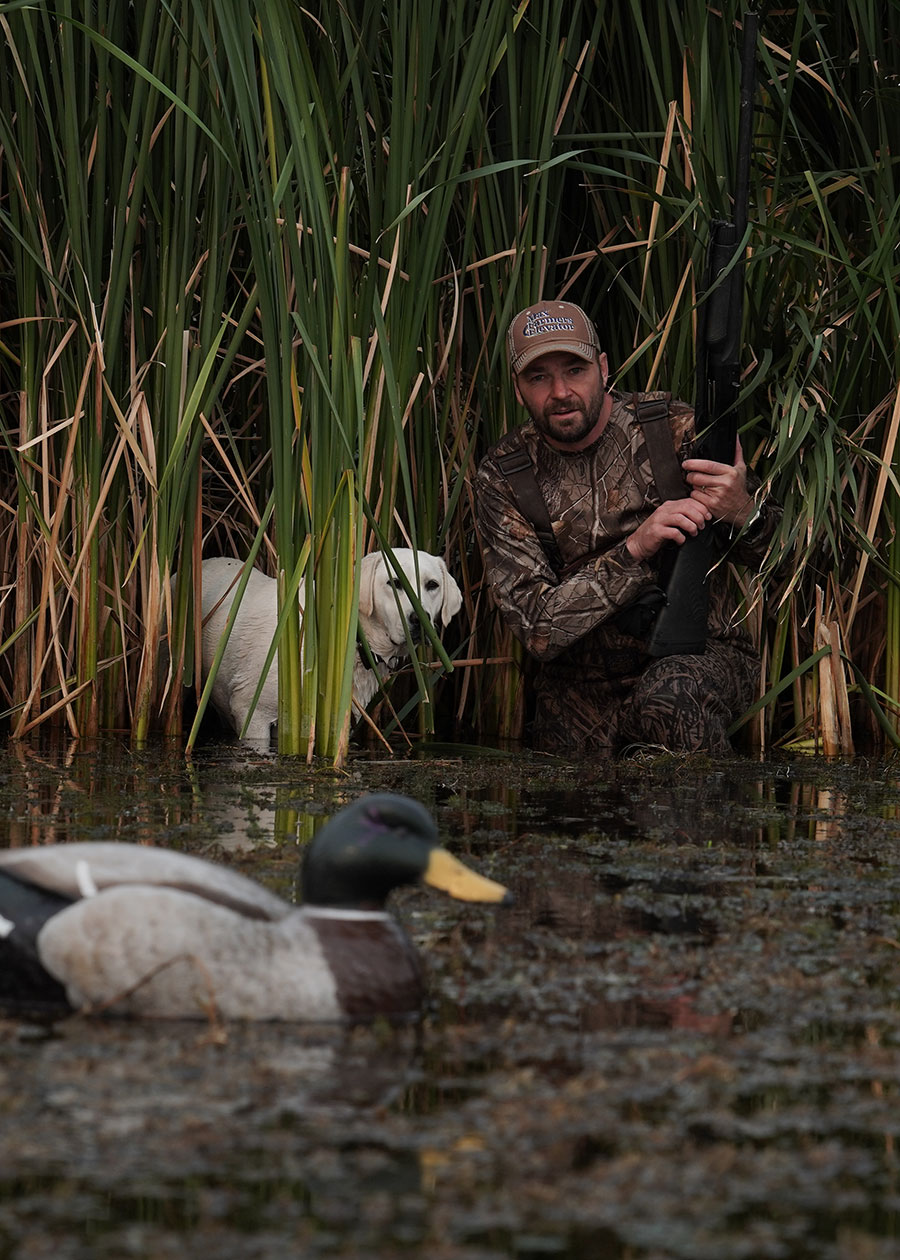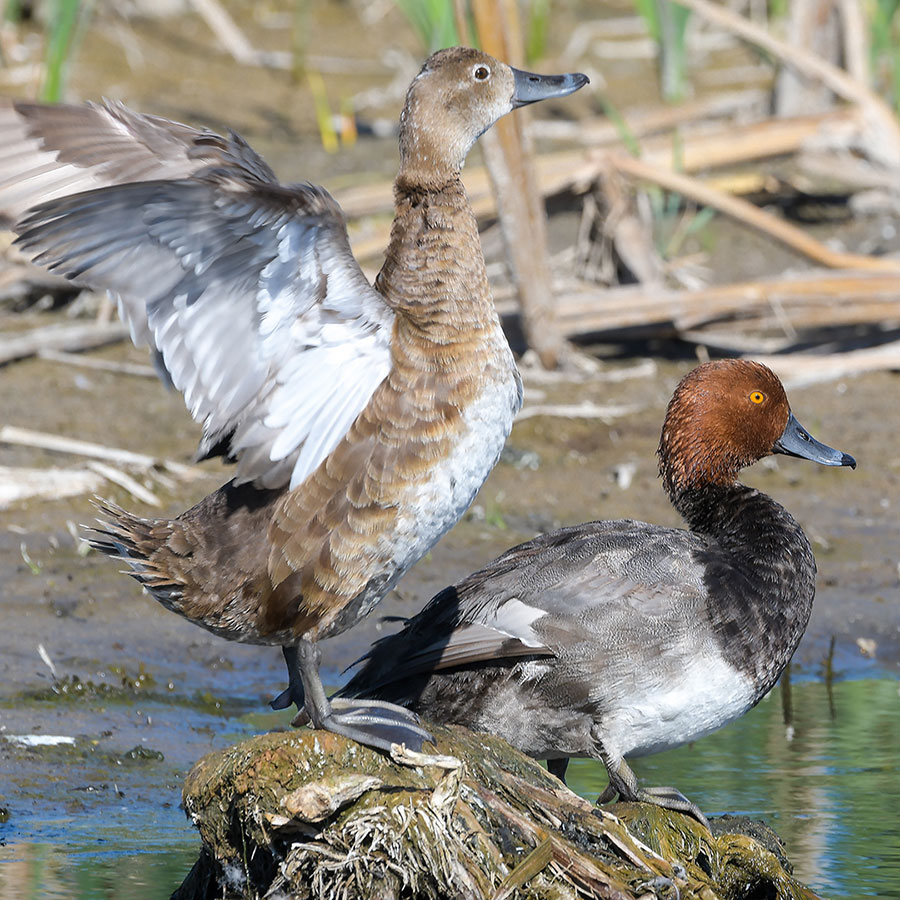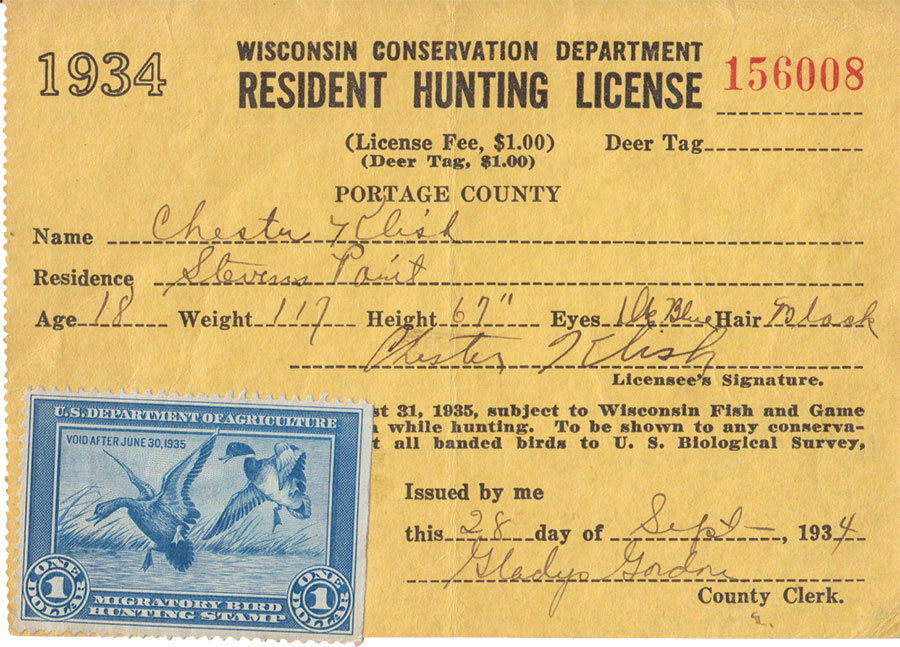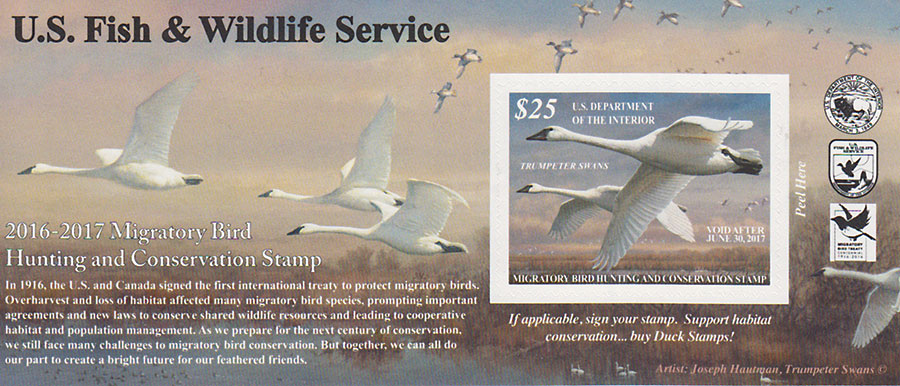North Dakota at Center of Duck Stamp Contest
Ron Wilson

The U.S. Fish and Wildlife Service announced in early March, weeks before ice-out on many Northern Plains wetlands, that Bismarck was tabbed as the site for its 2022 Federal Duck Stamp Art Contest and related events in late September.
The announcement was fitting.
“As the center of the Prairie Pothole Region, North Dakota is a crucial stopover site and breeding grounds for migrating birds in the Central Flyway,” said Matt Hogan, regional director for the Service’s Mountain-Prairie Region, in a USFWS news release. “North Dakota serves as a perfect spot for birders, hunters, conservationists, outdoor enthusiasts, and artists to celebrate this year’s Duck Stamp Contest.”
The only legislatively mandated federal art competition in the nation will be hosted by the Prairie Pothole Joint Venture. Representing federal, state, nonprofit and private landowner conservation partners, the PPJV works to sustain bird populations in the Prairie Pothole Region through voluntary wetland and grassland protection, restoration and enhancement programs.
USFWS officials said the winning artwork will be featured on the federal duck stamp that will go on sale July 1, 2023.
Conservation Effort Takes Flight
First, some background.
The duck stamp, or migratory bird hunting and conservation stamp, began in 1934 in direct response to the grave decline in the nation’s once plentiful duck and goose populations.
“Prior to ratification of the Migratory Bird Treaty Act in 1918, commercial exploitation and unregulated hunting weighed heavy on waterfowl populations,” said Mike Szymanski, North Dakota Game and Fish Department migratory game bird management supervisor. “Add in the conversion of millions of acres of prairie grasses and wetlands to create farmland, coupled with the historic drought of the 1930s, and America’s waterfowl simply couldn’t recover.”

While waterfowl hunters age 16 and older are required to purchase a duck stamp, conservationists urge all hunters to buy a stamp because the funds used to purchase refuge lands and waterfowl production areas benefit many.
And the astonishing variety of wildlife experienced by explorers to North America was no longer.
According to the USFWS, President Franklin D. Roosevelt signed the Migratory Bird Hunting Stamp Act nearly 90 years ago, and an increasingly concerned nation took action to stop the destruction of wetlands vital to the survival of migratory waterfowl. Under the act, all waterfowl hunters 16 years of age and over must annually buy and carry a federal duck stamp.
The WPAs benefit all prairie habitat type species from sharp-tailed grouse, pheasants, songbirds, wading birds, white-tailed deer and, of course, waterfowl.
Since 1934, according to the USFWS, more than $1 billion has been raised by the sale of federal duck stamps to help conserve more than 6 million acres of high-quality waterfowl habitat. Service officials, and certainly many conservationists, laud the duck stamp as a conservation success story for the ages.
“The duck stamp is truly an American thing … it’s one of the rare examples,” Szymanski said. “Historically, it is one of the most successful conservation programs in the world. And it is truly an American thing where we’re requiring people to buy the stamp for a hunting permit. That’s literally what it is, a hunting permit. But all the dollars are going to conservation. There’s nothing like it in the world.”
Another aspect of the duck stamp that makes it the nation’s own, certainly, is the amazing work that graces the stamps.
“I think it’s really important for all hunters in North Dakota to take note of what the duck stamp does because they’re all benefiting from it, especially pheasant hunters and deer hunters,” he said. “The conservation work that’s funded by duck stamp dollars is exceptional, and it’s the basis of what we have in North Dakota. So, the more duck stamps we sell, the better off we are for conserving habitat and providing hunting opportunities.”
Duck Stamp Milestones

- 1929 - The Migratory Bird Conservation Act is passed.
- 1934 - The first duck stamps are sold.
- 1949 - The first duck stamp art contest was open to any U.S. artist who wished to enter. Decades later, the Federal Duck Stamp Art Contest remains the only art competition of its kind sponsored by the U.S. government, and one that anyone may enter. Wildlife artists annually vie for the prestige of seeing their art grace the new stamp.
- 1984 - Congress amended the Duck Stamp Act to authorize the interior secretary to license reproductions of the federal duck stamp on products manufactured and sold by private sector enterprises. Royalties from the sale of these products are also deposited into the Migratory Bird Conservation Fund for wetlands acquisition.
- 2010 - The Electronic Duck Stamp Program is piloted, allowing users to buy federal duck stamps online through state licensing systems. A printed receipt, available immediately, is valid for 45 days, during which time a physical duck stamp is mailed. The E-stamp Program became permanent in 2013.
- 2014 - President Obama signed into law the first price increase for the federal duck stamp in more than 20 years. Bringing the cost of a duck stamp to $25 beginning in 2015-16, the price increase ensured that funds would be available to protect an estimated 17,000 additional acres of habitat every year. The additional $10 would be used to acquire conservation easements, allowing important habitat to be protected for future generations, while allowing owners to retain many private property rights and to live on and use their land.
(Source – U.S. Fish and Wildlife Service)
The duck stamps, including the first duck stamp on page 13, were provided by Mike Szymanski, Game and Fish Department migratory game bird management supervisor.



